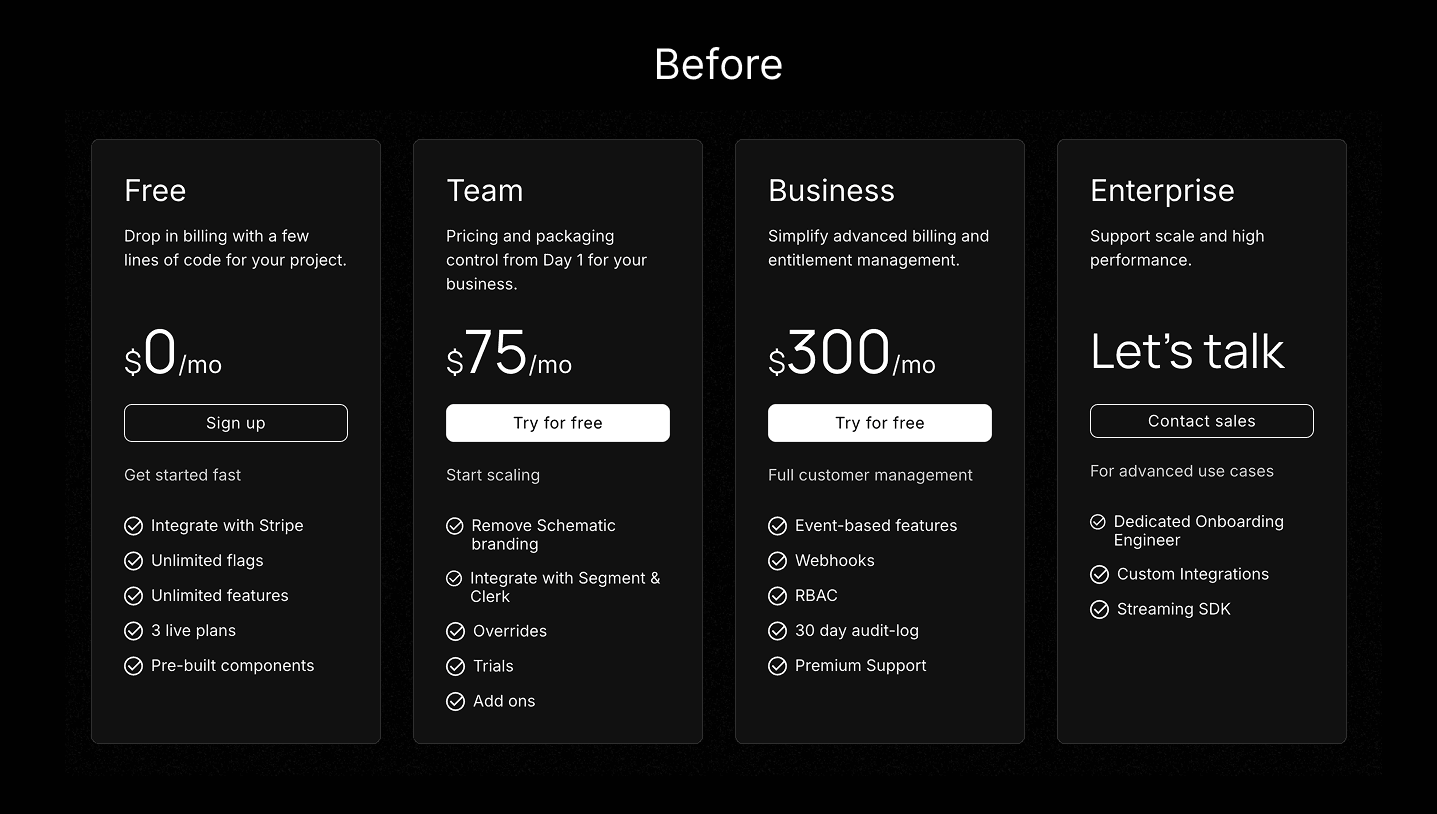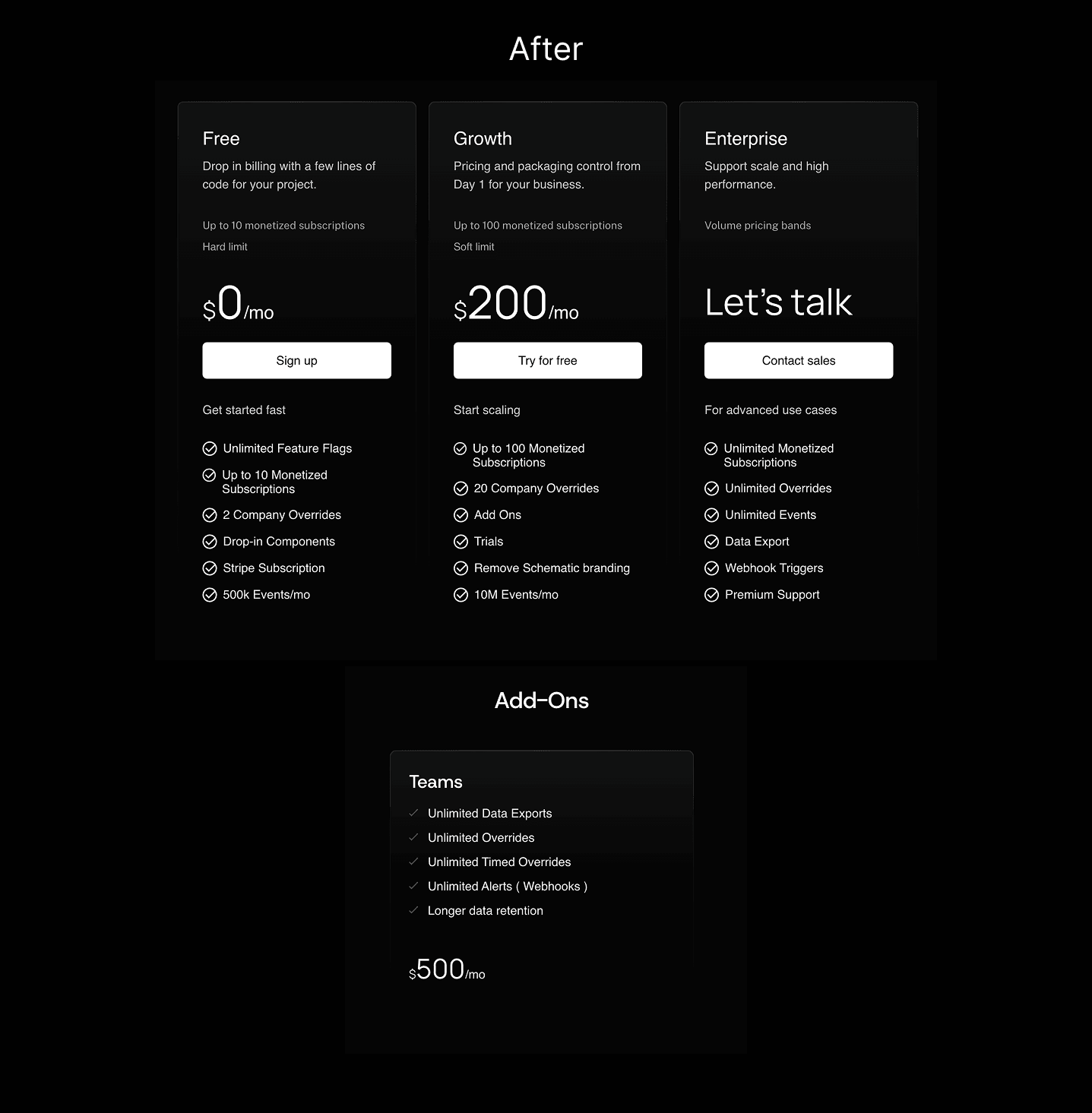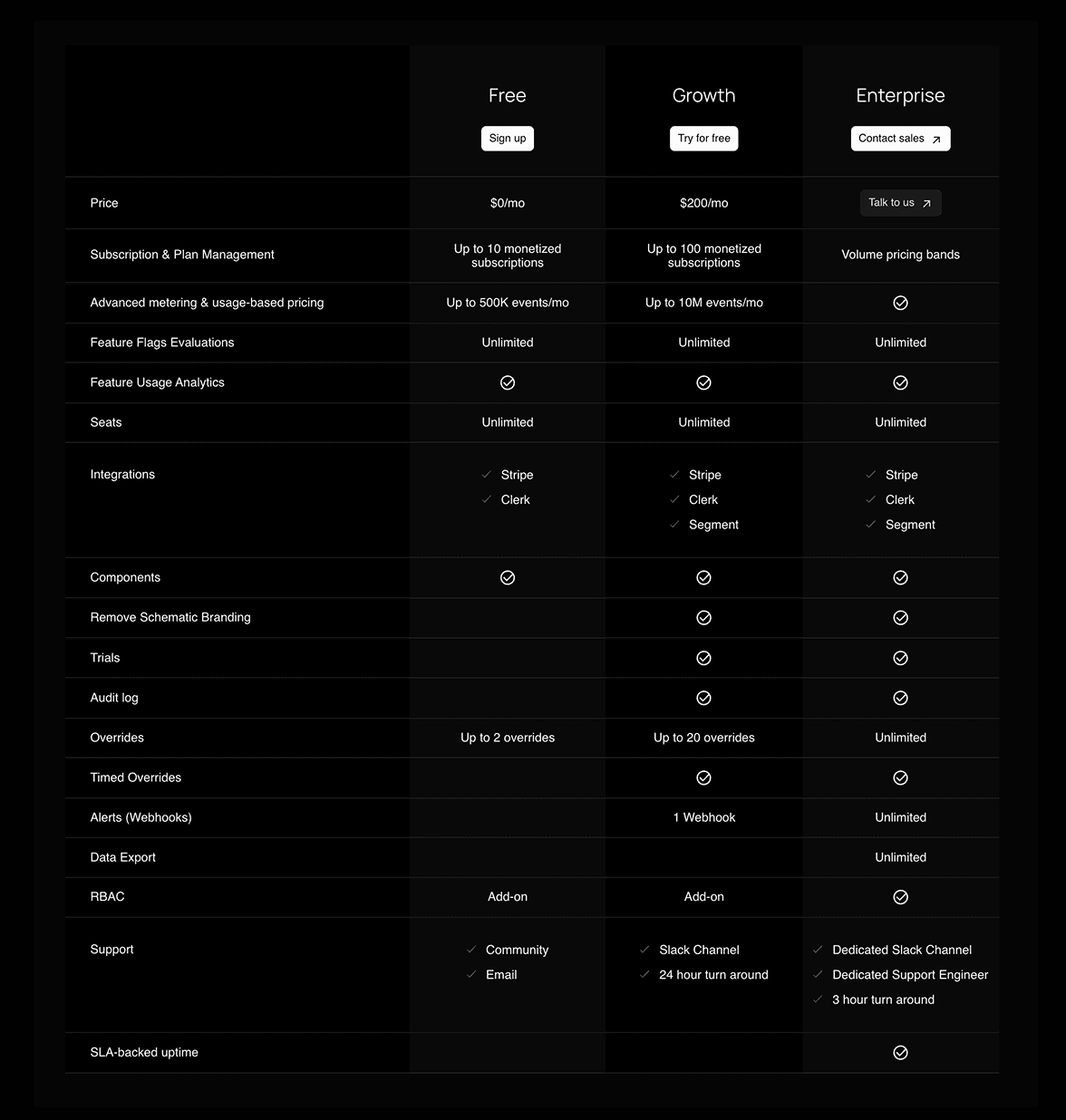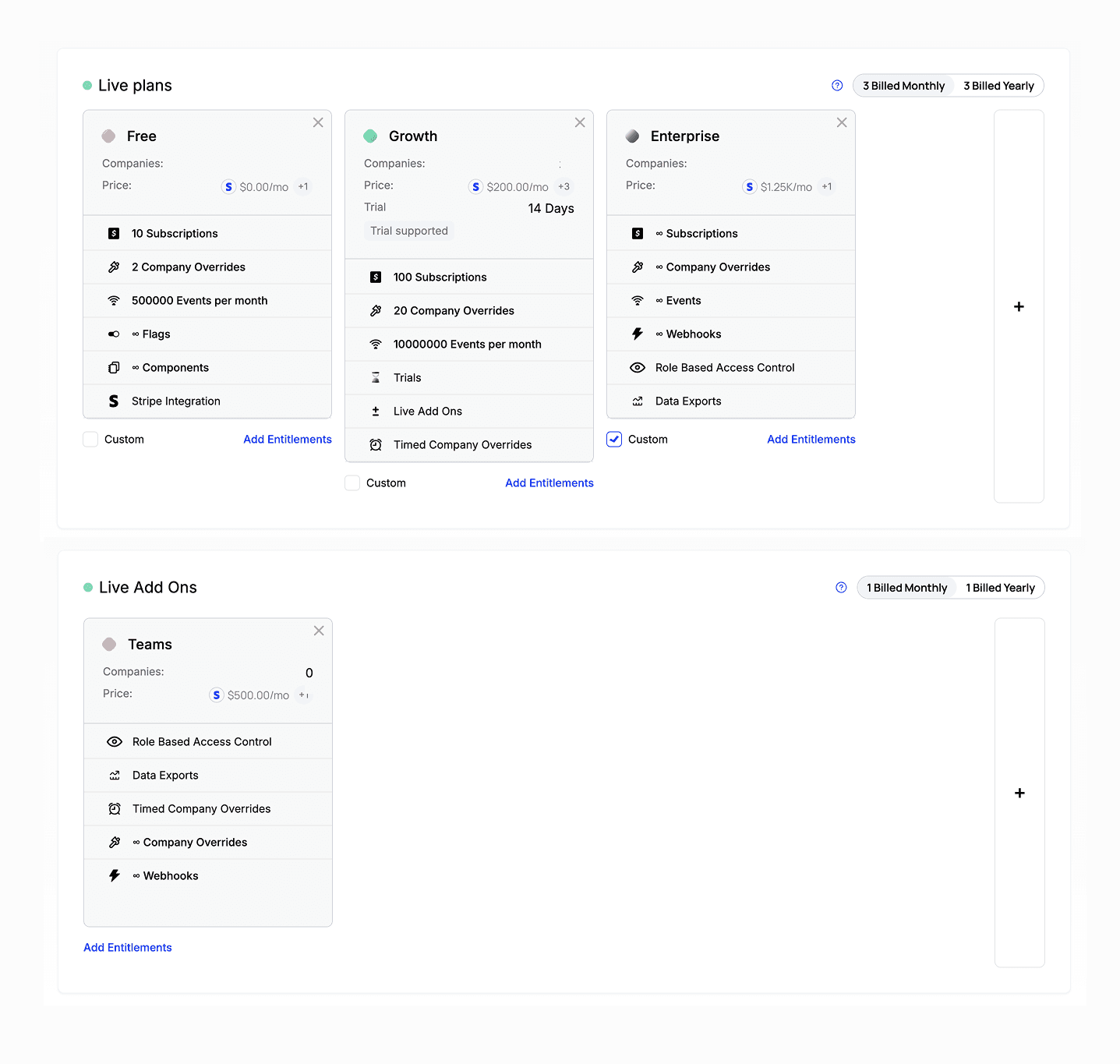We’re rolling out new pricing. In this post, we’ll walk through why we’re making the change, what’s new, and how we used Schematic itself to make the transition seamless.
We’re changing our pricing, because our product is constantly becoming more valuable, and we want our pricing to reflect that. We’ve shipped usage-based billing, advanced entitlement controls, and powerful analytics. We’re now powering core monetization workflows for teams across pricing, packaging, billing, and growth. Our original pricing, focused on adoption, no longer reflected that.
Initially, flat-rate tiers worked well for design partners and early adopters. But by early 2025, we were handling:
Feature flagging and entitlements
Subscription and plan management
Admin panels and billing UIs
Usage metering and enforcement
Webhooks, overrides, and analytics
Teams were replacing feature flag tools, homegrown billing infra, and expensive product analytics. And they were sending millions of events through Schematic every month. Our pricing needed to reflect the scope of value we were delivering.

The most common feedback we got: "that feels cheap."
Customers and prospects alike said the value Schematic delivers was underpriced. And they were right. Our original goal was to optimize for adoption. But now that Schematic is powering monetization directly, it was time to shift toward value-based pricing.
We talked to customers about what pricing metric felt most intuitive. We considered:
Flag evaluations
MAUs
% of revenue (like Stripe)
Ultimately, one concept stood out: Monetized Subscriptions. If Schematic is managing and monetizing a subscription—through pricing, metering, gating, billing—then that’s real value. That’s what we should charge for.
This led to follow-up questions:
What pricing bands make sense per monetized subscription?
How should we scale with our customers?
Which features should be included vs offered as add-ons?
We also saw distinct customer profiles:
Startups that want a generous free tier and clear, self-serve pricing
Mid-market teams that want SLAs, roadmap input, and premium support
We needed pricing that scales with complexity—not headcount or feature usage—and lets customers unlock advanced functionality as they grow.

Companies with an active subscription and payment method that are billed or will be billed, based on usage or trial expiration.
Included:
Flat-fee plans (e.g. $25/mo)
Usage-based plans (e.g. $5/unit/mo)
Plans with included usage and overages
Trials that require a credit card
Excluded:
Free plans
Trials without a payment method
Companies without an active subscription in Schematic
It reflects real value. If Schematic is powering monetization, it should count. It’s simple to understand, easy to track, and aligns with our role in the stack. We’re not charging based on seats, events, or evaluations. We want teams to experiment freely and only pay when they’re making money.

We didn’t just decide on a new model. We implemented and launched it entirely through Schematic.
We defined and tracked monetized_subscriptions in our data layer. This gave us real-time visibility into billable usage across environments.
We created plans using:
Boolean flags (e.g. RBAC, audit log, data export)
Usage-based features (event volume, override count)
Add-ons (via the Business Pack)
Plans were built using components to keep things modular and reusable.
We tested internally, then with a subset of customers. Overrides and preview tooling let us simulate new pricing without disruption. Full rollout followed once entitlements and usage aligned.
Our public pricing page pulls directly from our plan configuration. No manual syncing. What you see is exactly what customers get.

Why did Schematic change its pricing?: Schematic’s product has grown significantly in scope and value, powering core monetization workflows across pricing, entitlements, usage, and analytics. The original flat-rate tiers no longer reflected the value customers were receiving.
What feedback prompted the pricing change?: Customers consistently said the old pricing "felt cheap" compared to the value delivered. This signaled it was time to move from adoption-focused pricing to value-based pricing.
What is a “Monetized Subscription” and why is it the new billable metric?: A Monetized Subscription is an active subscription in Schematic with a payment method that is billed (or will be billed) based on usage or trial expiration. It’s simple, trackable, and directly tied to value creation.
How does the new pricing model support different types of customers?: It provides a generous free tier for startups and scalable options for mid-market teams that need SLAs and premium support. Pricing scales with monetization complexity—not seats or feature usage.
How did Schematic implement the pricing change using its own platform?: They tracked monetized subscriptions in their data layer, created modular plans using Boolean flags and usage features, tested the changes with overrides, and synced the public pricing page live to the actual plan configuration.